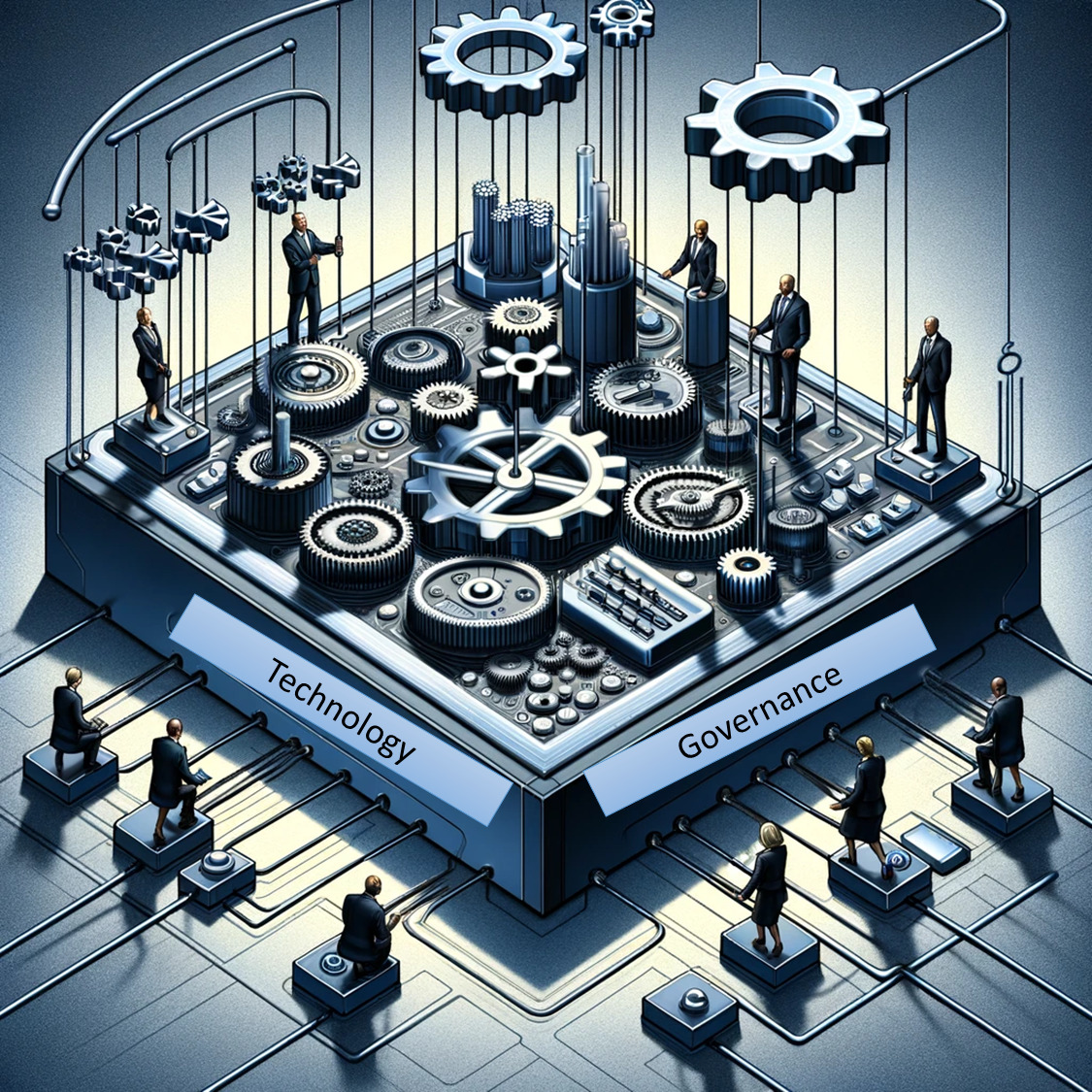
Steering the Digital Ship: Governance in a Sea of Innovation.
In the rapidly evolving digital landscape, where innovation and change are the only constants, Technology Governance stands as the essential compass guiding organizations through these turbulent waters. This governance is not merely about enforcing rules or stifling creativity; it is about establishing a structured framework and set of policies that align technology decisions with the overarching business objectives. It serves to navigate the delicate balance between embracing innovation and managing risk, ensuring that technology investments contribute positively to the organization’s goals. Technology Governance architects play a crucial role in this process, setting clear guidelines that ensure technology not only serves the broader goals of the organization but does so in a way that maintains operational integrity and compliance.
Establishing a Governance Framework
The foundation of effective Technology Governance lies in the development of a comprehensive governance framework. This framework outlines the policies, procedures, and standards governing the use of technology within the organization. It encompasses aspects such as IT investment decisions, project prioritization, security standards, and compliance with legal and regulatory requirements. A well-defined governance framework ensures that all technology initiatives are evaluated through a strategic lens, prioritizing those that align with the business’s long-term objectives.
Aligning Technology and Business Strategy
Central to Technology Governance is the alignment of technology initiatives with the business strategy. This ensures that technology investments are not made in isolation but are directly linked to achieving strategic business outcomes. Governance mechanisms, such as steering committees and architecture review boards, play a pivotal role in this process, providing oversight and ensuring that technology projects support the organization’s goals and deliver measurable value.
Risk Management and Compliance
In the digital age, managing technology-related risks and ensuring compliance with industry regulations are paramount. Technology Governance involves identifying, assessing, and mitigating risks associated with IT operations, cybersecurity threats, and data privacy concerns. Governance policies must also ensure adherence to relevant legal and regulatory standards, protecting the organization from potential liabilities and enhancing its reputation for reliability and security.
Fostering Innovation within a Governance Structure
A common misconception is that governance stifles innovation. However, effective Technology Governance frameworks actually create an environment that fosters innovation by providing clear guidelines and processes for exploring new ideas. By establishing pathways for innovation within the governance structure, organizations can encourage creative thinking and experimentation, while still ensuring that new initiatives are evaluated for alignment with strategic objectives and risk profiles.
Managing Change in the Digital Landscape
Technology Governance must be dynamic, adapting to the rapid pace of change in the digital landscape. This requires ongoing review and revision of governance policies and frameworks to reflect emerging technologies, changing business models, and evolving regulatory environments. Change management processes are integral to governance, ensuring that transitions to new technologies or systems are conducted smoothly, with minimal disruption to business operations.
Empowering Decision-Making at All Levels
Effective governance distributes decision-making authority across different levels of the organization, empowering teams with the autonomy to make technology decisions within the established framework. This decentralized approach accelerates decision-making, enhances agility, and encourages accountability among teams, fostering a culture of innovation and responsiveness.
Strengthening Stakeholder Communication
Technology Governance also focuses on improving communication and collaboration among stakeholders across the organization. By facilitating transparent dialogue about technology decisions, governance structures ensure that all voices are heard, and that there is a clear understanding of how technology investments align with business objectives. This collaborative approach enhances buy-in and supports the successful implementation of technology initiatives.
Case Study: The LEGO Group’s Digital Transformation Governance
The LEGO Group’s journey through digital transformation showcases the critical role of Technology Governance in steering innovation. Faced with the challenge of modernizing its IT infrastructure and embracing digital opportunities, LEGO implemented a robust governance framework that aligned technology projects with its strategic business objectives. This framework prioritized investments in digital technologies that enhanced customer experiences and streamlined operations.
By establishing a cross-functional digital governance board, LEGO ensured oversight and coordination of digital initiatives across the organization, promoting synergy and reducing redundant efforts. The governance framework also emphasized risk management, particularly in areas related to cybersecurity and data privacy, safeguarding the company’s digital assets and customer information.
LEGO’s governance approach balanced innovation with risk management, enabling the company to explore new digital ventures, such as augmented reality apps and online engagement platforms, while maintaining operational integrity. The result was a successful digital transformation that not only improved operational efficiency but also enriched the customer experience, driving growth and solidifying LEGO’s position as a leader in the toy industry.
Technology Governance is the keystone of navigating the digital era’s sea of innovation, providing the direction needed to align technology initiatives with business goals. By establishing clear frameworks and policies, fostering an environment that balances innovation with risk management, and ensuring compliance, governance architects empower organizations to harness the full potential of their technology investments. The LEGO Group’s digital transformation underscores the transformative power of effective Technology Governance, demonstrating that with the right guidance, organizations can indeed steer their digital ship successfully through the waves of change and into the future.
